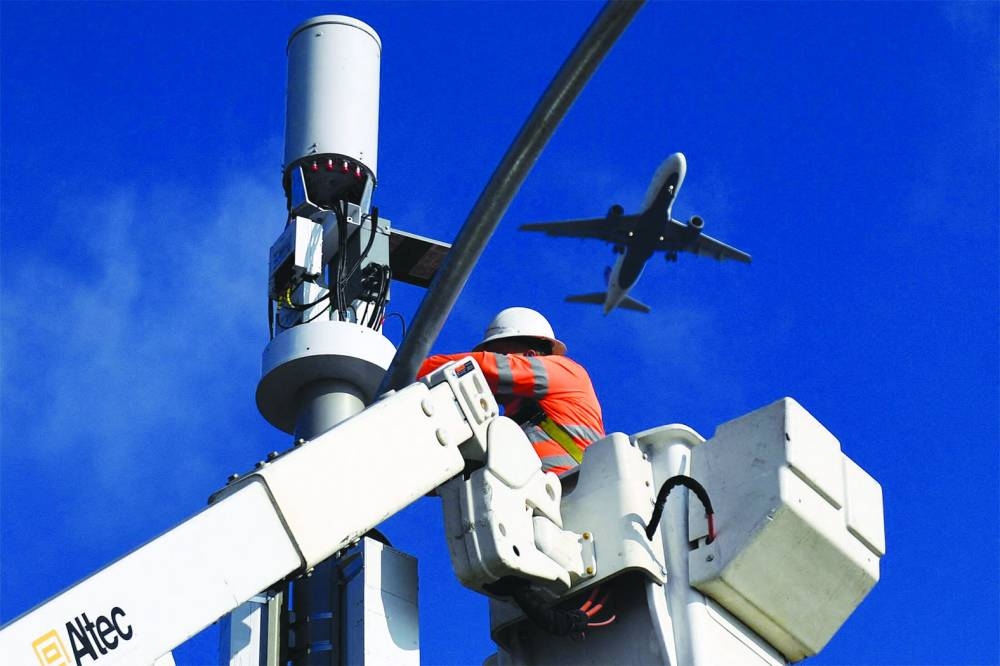Global aviation is facing significant challenges as time is fast running out for airlines to meet proposed regulatory deadlines in the United States to ensure they won’t suffer interference from 5G C-band transmissions from towers located near US airports and approach paths.
Recently, the Federal Aviation Administration (FAA) in the United States issued a directive, which gives airlines until July 1 to install new aircraft radar altimeters (RadAlts) or upgrade existing ones with new filters to utilise instrument landing systems at affected US airports.
Furthermore, from February 1, 2024, aircraft that have not been retrofitted with filters or new RadAlts will be banned from operating in US airspace.
RadAlts not only tell an aircraft its height from the ground but also feed into other safety-critical systems that are vital for landing, particularly in poor weather.
An eleventh-hour compromise between the FAA and 5G telecom providers avoided massive flight disruptions in 2022. Under the deal, the telecom providers — AT&T and Verizon — agreed to restrict power levels of their 5G C-band towers near airports and approach paths.
That compromise is set to expire in July, however. In the same month, up to 19 additional telecom providers are expected to introduce 5G services in the C-band and they are not part of the existing, voluntary deal.
Airlines have long warned that the fifth-generation wireless technology, widely known as 5G, could interfere with sensitive airplane instruments such as altimeters, significantly hampering low-visibility operations and grounding planes.
FAA, airlines, and manufacturers have cautioned against 5G interference risks since 2018, when the US Federal Communications Commission (FCC) proposed auctioning off the bandwidth to telecom providers.
The industry continued to raise these concerns during and following the auctions, which raised billions of dollars for the US government.
Unfortunately, industry concerns went unheeded until late 2022, when they reached the White House, leading to the last-minute compromise.
Since then, airlines have borne the cost of modifying thousands of aircraft to enable them to operate in CAT 2 and CAT 3 landing conditions in the presence of 5G transmissions.
The FAA, meanwhile, has logged about 100 instances of possible interference with RadAlts, although none has resulted in an incident or accident.
The FAA estimates the cost of compliance at $26mn based on $26,000 per retrofit for approximately 1,000 aircraft.
IATA calculations put the cost at twice that amount and if the 6,000 US aircraft that have already been retrofitted to follow FAA recommendations are included, the price soars to more than $450mn.
If the cost of non-US carriers is also added, the industry outgoing will be close to $640mn, the association points out.
“The unfairness of this outcome cannot be overstated,” says Doug Lavin, IATA’s vice president, (Member and External Relations – North America).
“Airlines are having to find and pay for a solution to a problem of somebody else’s making. They are blameless yet suffering the consequences. But we want to move forward. We are working hard to find a rational solution.”
IATA Director General Willie Walsh in a recent letter to US Secretary of Transportation Pete Buttigieg and Acting FAA Administrator Bill Nolen noted, “It is now clear to everyone (the FAA, the aircraft manufactures, the radio altimeter manufacturers, and airlines serving the United States) that many operators will not make the proposed July 2023 ... retrofit deadline owing to supply chain issues, certification delays, and unavoidable logistical challenges.”
To date, other than the US, only Laos remains as being of high concern, IATA noted.
Laos is at the early stages of 5G development and there is every reason to believe that it will listen to IATA advice on keeping 5G away from the aviation spectrum, according to Stuart Fox, IATA’s director, Flight and Technical Operations.
“There is a minor issue in India with carriers unnecessarily advised to contact RadAlt manufacturers about upgrading but there are no safety issues,” he says.
At present, Canada has limited 5G C-band transmission power, introduced exclusion zones on an interim basis, and antennas have a national down-tilt requirement. Australia, China, and Japan have all taken sensible precautions.
In Japan, for example, the macro cell power levels are only 4% of that permitted in the United States and the small cell power levels are less than 1%.
In Europe, the dedicated 5G spectrum is in the 3.4GHz to 3.8GHz range, far enough away from that used by radio altimeters.
The power levels are generally far lower too. French transmission power, for example, is ten times lower than that licensed in the United States.
Walsh urged the FAA to develop a project plan that includes milestones agreed to by all involved in the retrofit implementation.
“A well-crafted implementation project plan clearly offers greater opportunities for success than today’s decentralised approach. It will also give the telcos a realistic picture as to progress to date and an expectation as to when they can take full advantage of their 5G investment.
“Finally, it will inform the US Government as a whole as to what steps may need to be taken if the current deadlines prove unachievable.”
Pratap John is Business Editor at Gulf Times. Twitter handle: @PratapJohn

A contractor installs 5G equipment on a light pole near Los Angeles International Airport in California. Global aviation is facing significant challenges as time is fast running out for airlines to meet proposed regulatory deadlines in the United States to ensure they won’t suffer interference from 5G C-band transmissions from towers located near US airports and approach paths.

